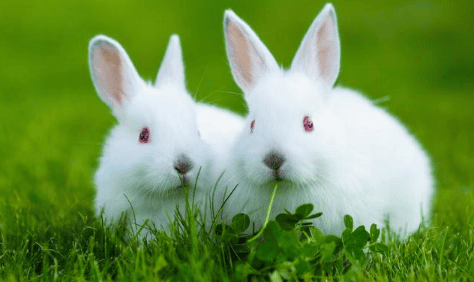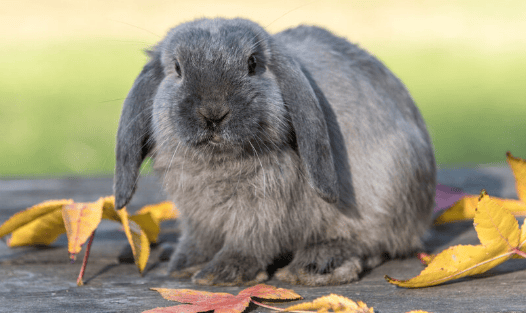1. Septicemia in rabbits
① There are three causes: first, intrauterine Staphylococcus infection of the female rabbit; second, Staphylococcus aureus infection in the breast of the female rabbit. infection; third, environmental pollution staphylococcus infection.
②The main reason is caused by environmental pollution.
③If the number of pustules in rabbits that are already sick is not large, use a sterile needle to prick the pustules and drain the pus. After cleaning, apply iodine glycerin or antibiotic ointment. If there are too many pustules, the treatment value is not great and it is best to eliminate them.

2. Eperythrozoonosis
①There are three infection routes: The first is bites from blood-sucking insects (such as stinging flies, mosquitoes, and ticks); the second is needle injection; and the third is vertical infection of the mother-child placenta. Of all routes of infection, transmission by blood-sucking insects is considered the most important.
② Very few people die from simple epierythrozoon infection, and most of them die due to the aggravation of other diseases. Therefore, we must pay attention to the control of this disease. The author believes that the key is to start with the purification of breeding rabbits, especially the purification of the breeding mother.
③ There are many types of drugs to control the disease, such as Benil, doxycycline, sulfa drugs, mycogenide, Chinese herbal medicine, etc., all of which are effective.
3. Breastfeeding syndrome in rabbits
① This is caused by pathogenic bacteria infection such as E. coli. The cause of death was suspected to be E. coli toxin poisoning.
②To control the disease, start with hygiene. Key parts: maternal breast, farrowing box, bedding, and cage floor. Thorough disinfection will greatly reduce the occurrence of this disease.
4. Yellow urine disease
① An acute enteritis in early stage rabbits (mainly open to the eyes). Because the rabbits did not eat solid feed at this time, they only drank milk. When enteritis occurs, the gallbladder becomes inflamed and a large amount of bile is secreted into the small intestine.
② To control yellow urine in young rabbits, corresponding measures should be taken according to the specific conditions of each rabbit farm. Starting from aspects such as environmental sanitation, feed nutrition regulation, bedding quality, and control of female rabbit mastitis. Generally speaking, long-acting oxytetracycline has better effects when injected into female rabbits after delivery.
5. Red intestine disease
① A special disease that occurs after the rabbit starts eating. Death usually occurs within 18-25 days, and clinical features are not obvious before death.
② In all rabbit farms where the disease occurs, the bedding in the farrowing box is unhygienic, damp and dirty. When the bedding is replaced or removed, cleaned without leaving any debris, and then disinfected, the disease will disappear quickly. Therefore, the author believes that hemorrhagic Escherichia coli and its toxins, or mycotoxins are likely to be involved.
6. Type 2 rabbit plague
① In 2020, type 2 rabbit plague occurred for the first time in my country, causing huge losses and becoming the infectious disease that poses the greatest threat to China’s rabbit industry.
② Suggestions for the prevention and control of type 2 rabbit plague: sealing and controlling rabbit farms, strict disinfection, strengthening immunity, and harmless treatment.
7. Enteritis and diarrhea
①Causes: Environmental pollution (especially the pedals are contaminated by feces and the bedding is wet and dirty); the rabbit house is damp and cold, improper ventilation (high wind speed), 3 Failure to remove the farrowing box in time after weeks of age, excessive feed mycotoxins, high nutritional value and low fiber content; poor water quality or water pollution; misuse of drugs leading to bacterial imbalance, etc.;
②Pathogens: Escherichia coli is the Mainly, other pathogenic bacteria such as Klebsiella, Pasteurella, Salmonella, Clostridium weilinii, etc. are also involved in different rabbit farms;
③Control: The key lies in pertinence. The reasons vary from rabbit farm to rabbit farm. Drug susceptibility testing is recommended for rabbit farms with high incidence rates; for large rabbit farms that are difficult to control, it is recommended to cooperate with vaccine manufacturers to produce vaccines from pathogenic bacteria isolated on the farm.

8. Respiratory diseases: nasal congestion, pneumonia
① Home Respiratory diseases in rabbits are caused by a variety of pathogenic bacteria, mainly Pasteurella and Bordetella. However, according to the isolation and identification of infected rabbit tissues, Staphylococcus aureus, Pneumococcus, Klebsiella, Streptococcus, and even molds, etc. A variety of pathogenic bacteria are involved.
②It is difficult to find peace in a rabbit farm without being ruthless. We must start with the purification of breeding rabbits and environmental purification, and cooperate with drug prevention and control and vaccine prevention.
9. Dermatomycosis
① Baby rabbits are the main targets of skin fungal infections. In many rabbit farms, once the female rabbit becomes sick, the offspring will not be spared. There are many kinds of skin fungi that infect rabbits, and the most serious one is microspore dermatophyte.
②The biggest threat of this disease is that it is difficult to eradicate. It is currently the only infectious disease that is common to humans and rabbits. Once a person is infected, although it is not life-threatening, the itching is unbearable. Even with medication, it is difficult to cure and eradicate within 3-5 months and becomes a source of infection. Once rabbits become sick, breeders are susceptible to infection. In any workshop where breeders are infected, the rabbit infection rate will definitely remain high. Therefore, this disease must be taken seriously.

 扫一扫微信交流
扫一扫微信交流
发布评论